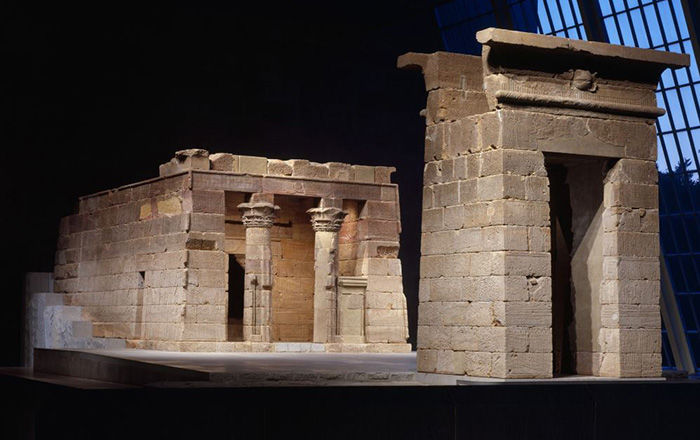Cat
Late Period–Ptolemaic Period
Bastet was a powerful goddess of Lower Egypt, one who was protective and could bring about great prosperity. In zoomorphic form, she was represented as a cat and cats were considered sacred to her. This cat sits in a typical pose, upright with its tail wrapped along its right side. It is poised and alert, on guard against external forces.
Like cat-headed Bastet statuettes, these cats often have special adornments. This figure’s ears were pierced for earrings, probably originally of precious metal, and it wears an amulet, the identity of which is unclear. Delicate incised marks cover the body and give texture to the cat’s fur.
Cat statuettes were among some of the most common zoomorphic dedications of the Late and Ptolemaic Periods. Small ones, like this one, would have been dedicated as offerings to temples or would have been deposited in catacombs alongside cat mummies, as at the extensive catacombs at Bubastis and Saqqara. Sometimes larger hollow examples held a cat mummy inside.
This image cannot be enlarged, viewed at full screen, or downloaded.
This artwork is meant to be viewed from right to left. Scroll left to view more.




